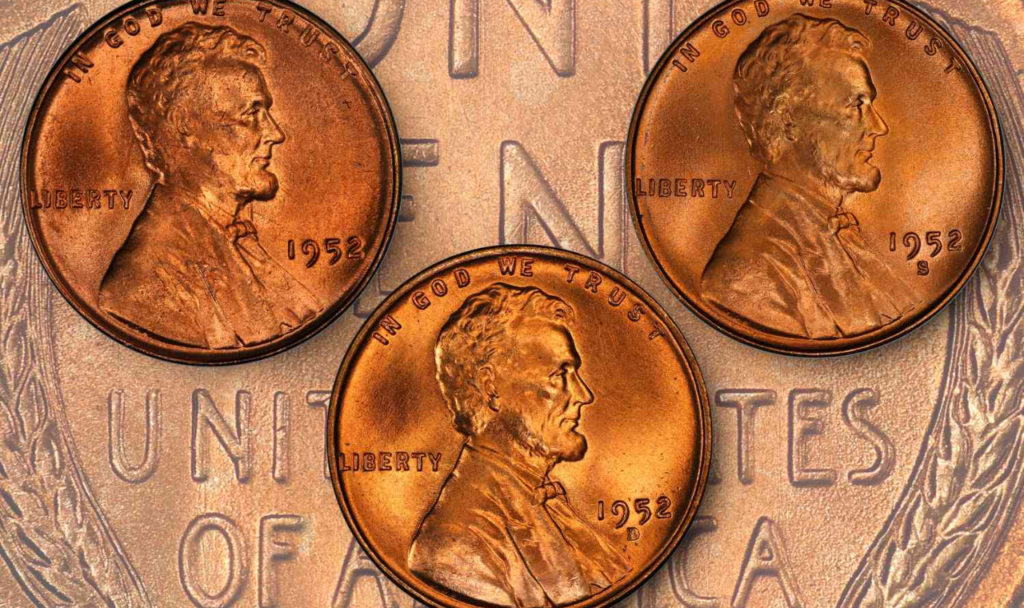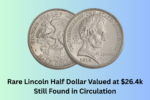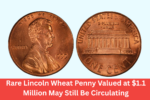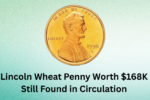In the world of coin collecting, a simple penny could be worth a small fortune. One rare version of the Lincoln Wheat Cent minted in 1943 recently fetched an astonishing $336,000 at auction, leaving collectors and curious citizens alike wondering: Could one still be hiding in your change?
A Mistake of Wartime Necessity
The United States Mint began producing the Lincoln Wheat Penny in 1909 to honor the 100th anniversary of President Abraham Lincoln’s birth. Designed by Victor David Brenner, it was the first U.S. coin to feature a real person rather than a symbolic figure like Lady Liberty. The coin’s reverse featured two wheat stalks hence the “Wheat Penny” nickname.
But during World War II, copper became a critical material for manufacturing ammunition and other military supplies. In 1943, the Mint made a strategic switch from copper to zinc-coated steel for all pennies. This change was meant to conserve copper for the war effort, resulting in the production of millions of steel cents.
However, a small number of copper planchets metal blanks used to strike coins remained in the machinery and were mistakenly struck with the 1943 design. These error coins, made of bronze instead of steel, were never meant to exist.
Rarity and Value
According to professional grading services like PCGS, only 30 to 40 genuine 1943 bronze Lincoln cents are known to exist today, making them one of the rarest and most coveted coins among collectors.
One of these rare coins was sold in 2022 by Heritage Auctions for a staggering $336,000. It was graded “About Uncirculated 50” by PCGS, reflecting its well-preserved condition despite its age. While this is a high-end example, other authentic 1943 copper pennies in varying conditions can still command tens or even hundreds of thousands of dollars.

The Legend of the Ford Reward
The 1943 copper penny became a cultural phenomenon in the late 1940s due in part to a widely circulated but false urban legend. According to the rumor, industrialist Henry Ford would give a free car to anyone who found a 1943 copper penny. Though entirely untrue, this myth helped fuel public fascination with the rare coin.
How to Tell if You Have One
Think you’ve found a 1943 copper penny in your pocket? Here’s how to check:
- Check the Date: Look for the year “1943” on the front of the penny.
- Magnet Test: Hold a magnet up to the coin. Steel pennies will stick to a magnet; copper ones won’t.
- Color and Weight: A genuine 1943 bronze cent will have a reddish-brown color and weigh about 3.11 grams (compared to the 2.7 grams of a steel penny).
- Authentication: If you suspect you’ve found one, have it evaluated by a reputable coin grading service like PCGS or NGC.
Beware of counterfeits. Some individuals have altered 1948 pennies to appear like 1943, or coated steel cents with copper.
Other Rare Wheat Pennies
While the 1943 bronze cent garners the most attention, it’s not the only Lincoln penny to reach astronomical value.
- 1909-S VDB Penny: Produced in San Francisco with just 484,000 coins minted, this penny features designer Victor David Brenner’s initials (“VDB”) on the reverse. Its low mintage and design controversy make it highly collectible.
- 1955 Double Die Penny: Due to a misalignment in the minting process, these pennies appear to have doubled text, especially in the date and “LIBERTY.” Only about 20,000 to 24,000 were circulated, and high-grade examples can sell for over $10,000.
Still in Circulation?
Technically, yes these coins are legal tender and could still be out there. But the odds are extremely slim. Most of these error coins have long been identified and pulled from circulation. That said, stories occasionally surface of someone stumbling upon a valuable coin in old collections, inherited piggy banks, or forgotten coin jars.
According to the U.S. Mint, no 1943 bronze cents were officially released into circulation. Their accidental creation only adds to their mystique.
Coin Collecting on the Rise
Coin collecting known formally as numismatics has seen a resurgence in popularity in recent years. As inflation, digital currencies, and economic uncertainties take center stage, many people are turning to tangible assets like rare coins.
Websites like coins.ha.com and government agencies such as the United States Mint offer useful resources for new collectors, including information on how to identify and preserve coins, as well as tips on spotting counterfeits.
Final Thoughts
While it’s unlikely you’ll find a six-figure coin in your next handful of spare change, it’s not entirely impossible. With the right mix of luck, knowledge, and attention to detail, that old wheat penny at the bottom of your drawer might just be a piece of American history—and a very valuable one at that.
If you believe you’ve stumbled upon a rare penny, consult with a certified numismatic expert or send your coin to a grading agency for verification. It could be the discovery of a lifetime.
FAQ,s
Q1: Why is the 1943 bronze penny valuable?
It’s a rare mint error—only 30–40 exist. Pennies that year were supposed to be steel, not copper.
Q2: How can I tell if I have one?
- Check the date: “1943”
- Magnet test: Copper won’t stick
- Color/Weight: Reddish-brown, ~3.11g
- Get it graded by PCGS or NGC
Q3: Is the Henry Ford car-for-penny story true?
Nope, just a myth.
Q4: Can it be faked?
Yes. Some use altered 1948 coins or copper-coated steel. Always get expert verification.
Q5: Any other rare wheat pennies?
Yes! Look for:
- 1909-S VDB
- 1955 Double Die
Q6: What if I think I found one?
Don’t clean it—get it authenticated. You might have something valuable.

Pankaj Kumar is a journalist at Chandigarh X, covering admit cards, recruitment, and government schemes. His articles provide readers with detailed insights into application processes, eligibility, and exam updates.
Outside of work, Pankaj enjoys traveling, fitness, and cricket, often participating in local matches on weekends.



